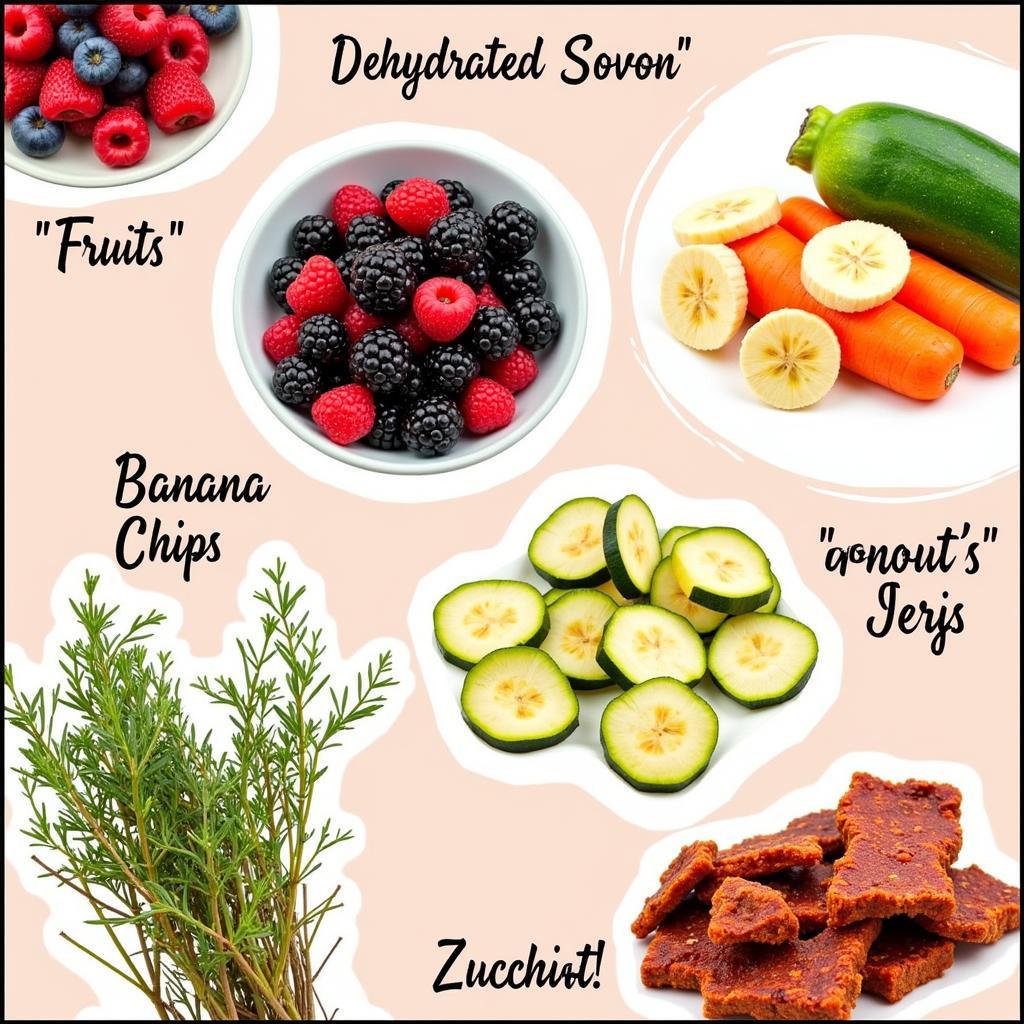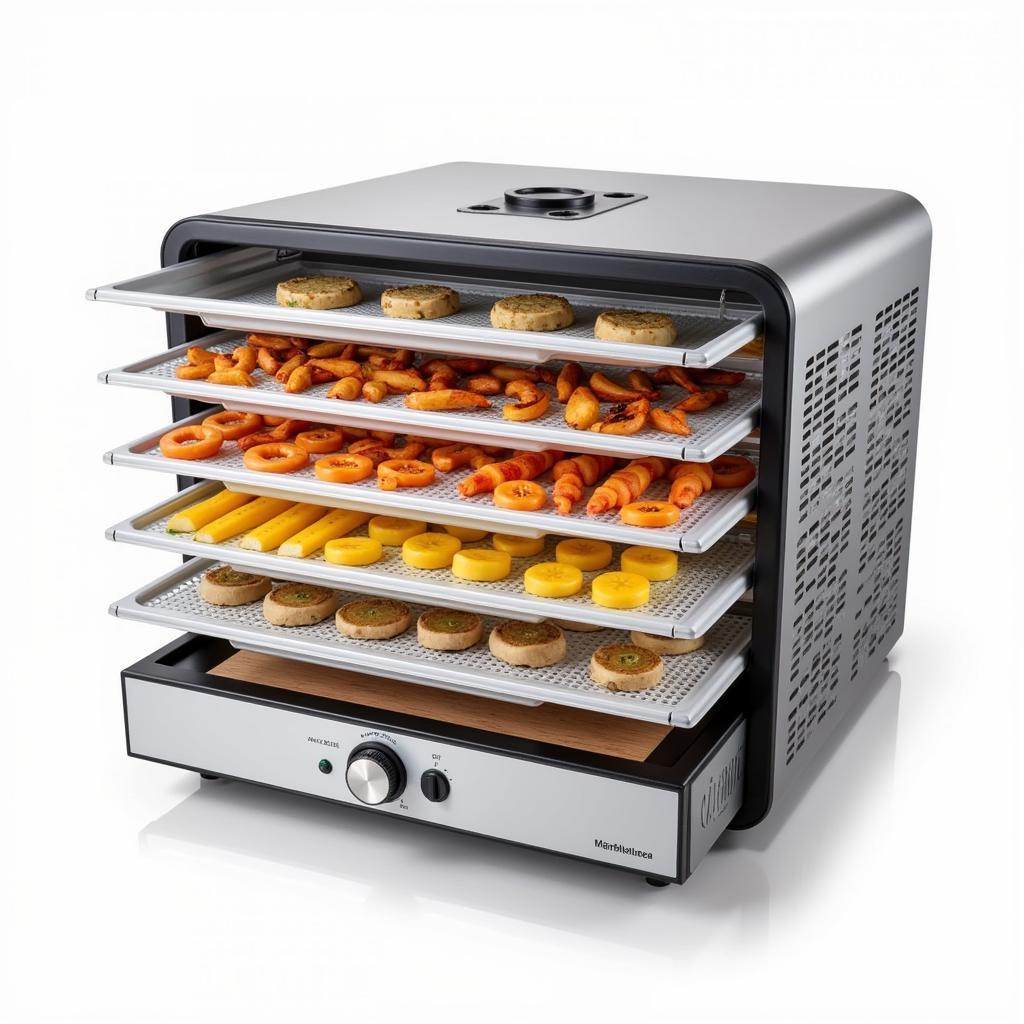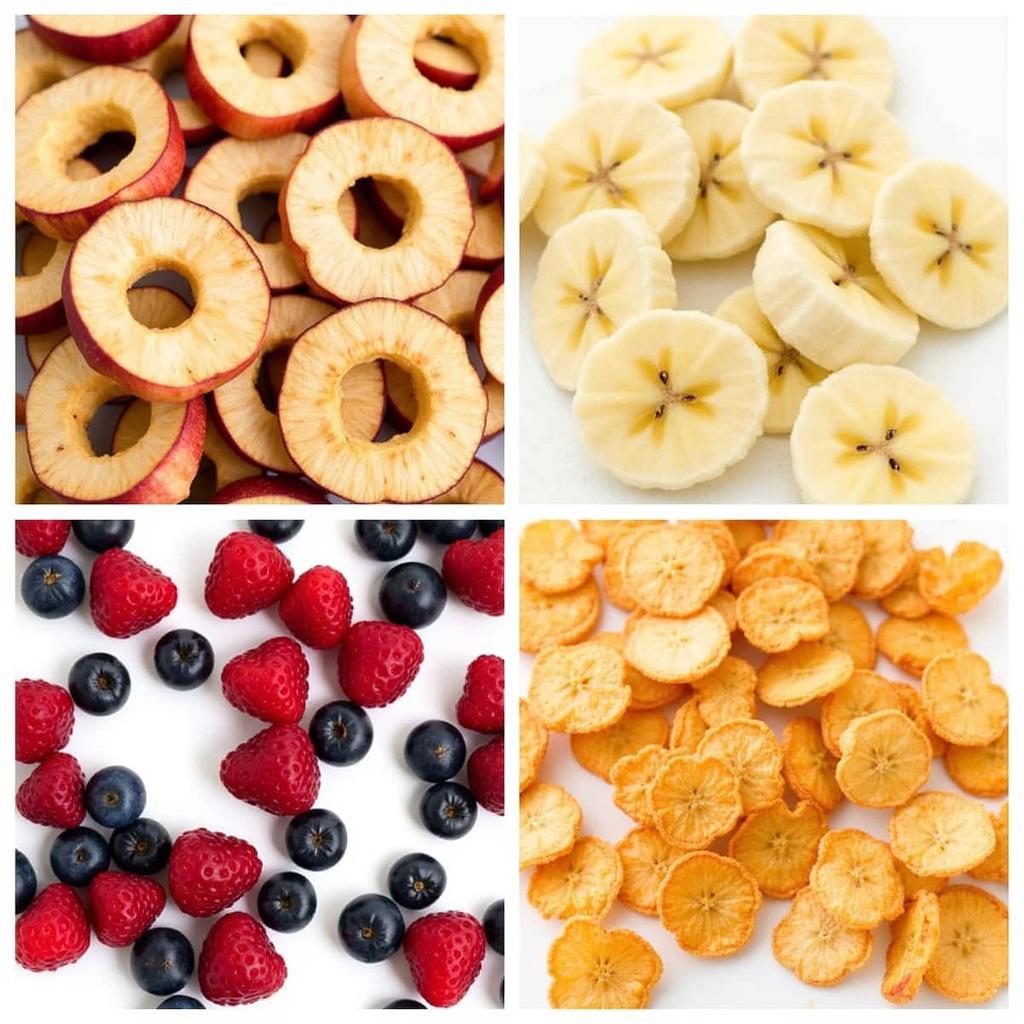Dehydrated food offers a fantastic solution for creating long-lasting food storage. Whether you’re preparing for emergencies, embarking on outdoor adventures, or simply seeking a convenient way to preserve seasonal bounty, understanding Dehydrated Food For Storage can revolutionize your approach to food preservation. This comprehensive guide will equip you with the knowledge and inspiration to embrace the world of food dehydration.
Why Choose Dehydrated Food for Storage?
Dehydrated food for storage offers an array of compelling benefits. By removing moisture, you effectively inhibit the growth of bacteria, mold, and yeast—the culprits behind spoilage. This translates to a significantly extended shelf life compared to fresh counterparts.
Here’s why dehydrated food stands out:
- Extended Shelf Life: Enjoy peace of mind knowing your food reserves can last for months or even years, reducing food waste and saving money in the long run.
- Compact Storage: Dehydrated food shrinks significantly in size, freeing up valuable pantry or storage space.
- Lightweight Portability: Ideal for backpacking, camping, and other outdoor adventures where weight and space are paramount.
- Preserving Seasonal Flavors: Capture the peak freshness of seasonal fruits, vegetables, and herbs to enjoy year-round.
- Cost-Effectiveness: Dehydrating food at home can be more economical than purchasing commercially dehydrated options.
 Assortment of Dehydrated Foods
Assortment of Dehydrated Foods
The Science Behind Food Dehydration
Food dehydration operates on a simple principle: removing moisture to inhibit spoilage. By reducing the water activity level below the threshold required for microbial growth, you effectively hit the brakes on the natural decomposition process. This preservation method allows you to enjoy your favorite foods long after their fresh counterparts would have perished.
Choosing the Right Dehydration Method
Selecting the appropriate dehydration method depends on your needs, resources, and preferences.
Here are the most common techniques:
- Sun Drying: The oldest and most traditional method, harnessing the power of the sun’s heat for dehydration. It requires specific climate conditions and a longer drying time.
- Oven Drying: Utilizes the heat of your oven for dehydration. While accessible, it can be less energy-efficient than other methods and requires careful temperature control.
- Food Dehydrators: Electric food dehydrators offer the most consistent and controlled environment for dehydration, with adjustable temperature settings and multiple trays for larger batches.
 Modern Electric Food Dehydrator
Modern Electric Food Dehydrator
Mastering the Art of Dehydrating Food
Achieving optimal results in food dehydration involves understanding the nuances of different food types.
Fruits
- Preparation: Wash, peel (if desired), and slice fruits uniformly for even drying.
- Tips: Some fruits, like apples and pears, benefit from pre-treatment with lemon juice or a ascorbic acid solution to prevent browning.
Vegetables
- Preparation: Wash, trim, and slice vegetables into uniform pieces. Blanching certain vegetables before dehydrating can help preserve color, flavor, and nutrients.
- Tips: Consider using a mandoline slicer for thin, even slices, which dehydrate more quickly.
Herbs
- Preparation: Gently wash and pat dry herbs.
- Tips: Bundle herbs together and hang them upside down in a well-ventilated area for air drying.
Meat Jerky
- Preparation: Choose lean cuts of meat, slice thinly against the grain, and marinate for flavor.
- Tips: Use a jerky gun or a sharp knife for consistent thickness. Ensure the meat reaches a safe internal temperature during dehydration to eliminate bacteria.
 Healthy Dehydrated Fruit Snacks
Healthy Dehydrated Fruit Snacks
Storing and Rehydrating Dehydrated Food
Proper storage is essential to maintain the quality and safety of your dehydrated food:
- Airtight Containers: Store dehydrated food in airtight containers, such as glass jars or vacuum-sealed bags, to prevent moisture absorption.
- Cool, Dark, and Dry Place: Find a cool, dark, and dry location for storage to protect against light, heat, and humidity, which can degrade quality.
Rehydrating Your Culinary Creations
- Rehydrating: To rehydrate, simply submerge the dehydrated food in water or broth until it returns to its desired consistency.
- Using Dehydrated Ingredients: Incorporate dehydrated fruits into trail mixes, granola bars, or baked goods. Add dehydrated vegetables to soups, stews, or sauces.
Dehydrated Food: A World of Possibilities
From everyday snacks to gourmet ingredients, the world of dehydrated food opens up a realm of culinary possibilities:
- Emergency Preparedness: Create a reliable stockpile of nutritious and shelf-stable foods for unexpected events.
- Outdoor Adventures: Fuel your backpacking trips or camping expeditions with lightweight and energy-dense dehydrated meals.
- Everyday Convenience: Enjoy the convenience of ready-to-go ingredients for busy weeknights or quick snacks.
- Creative Culinary Explorations: Experiment with unique flavor combinations and elevate your dishes with dehydrated ingredients.
FAQs: Your Dehydrated Food Questions Answered
1. How long does dehydrated food last?
Properly dehydrated and stored food can last for several months to several years.
2. Can I dehydrate food without a dehydrator?
Yes, alternative methods include sun drying and oven drying.
3. What are some common mistakes to avoid when dehydrating food?
Overcrowding the dehydrator trays, improper storage, and insufficient drying time are common pitfalls.
4. Can I dehydrate leftovers?
While it’s possible to dehydrate certain leftovers, it’s generally not recommended due to potential food safety concerns.
5. Where can I find recipes for dehydrated food?
Numerous online resources, cookbooks, and websites specialize in dehydrated food recipes.
Embracing the Dehydrated Food Lifestyle
Dehydrating food for storage is more than just a preservation method; it’s a gateway to a more resourceful, sustainable, and flavor-filled approach to food. From emergency preparedness to outdoor adventures and culinary creativity, the benefits of incorporating dehydrated food into your life are abundant.
Are you ready to explore the world of dehydrated food? Contact us at Phone Number: 02437655121, Email: [email protected] or visit us at 3PGH+8R9, ĐT70A, thôn Trung, Bắc Từ Liêm, Hà Nội, Việt Nam. We are available 24/7 to assist you.